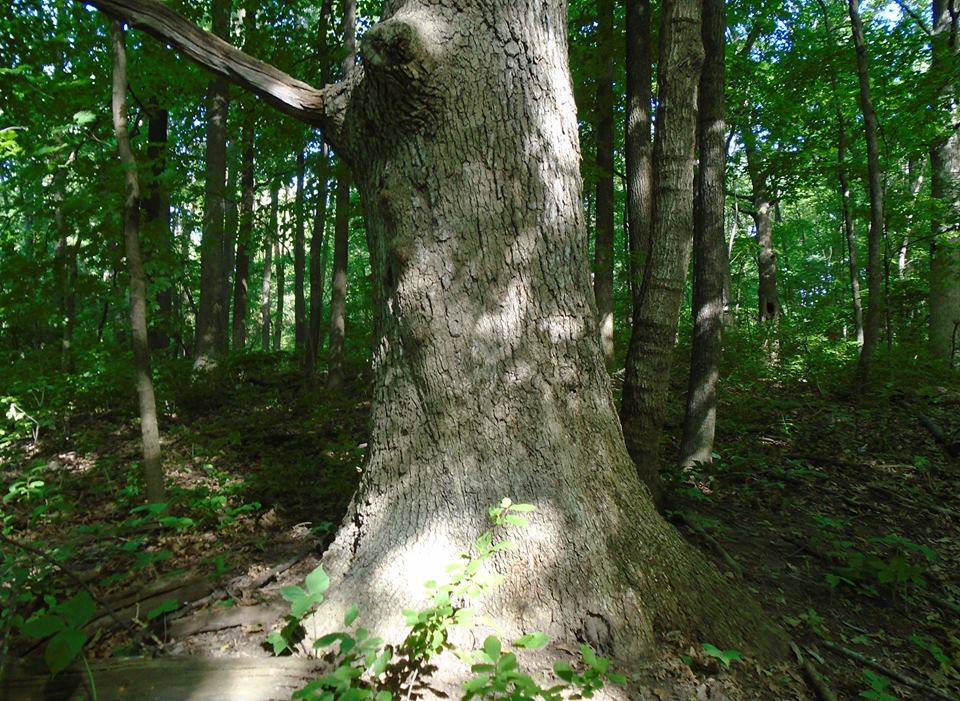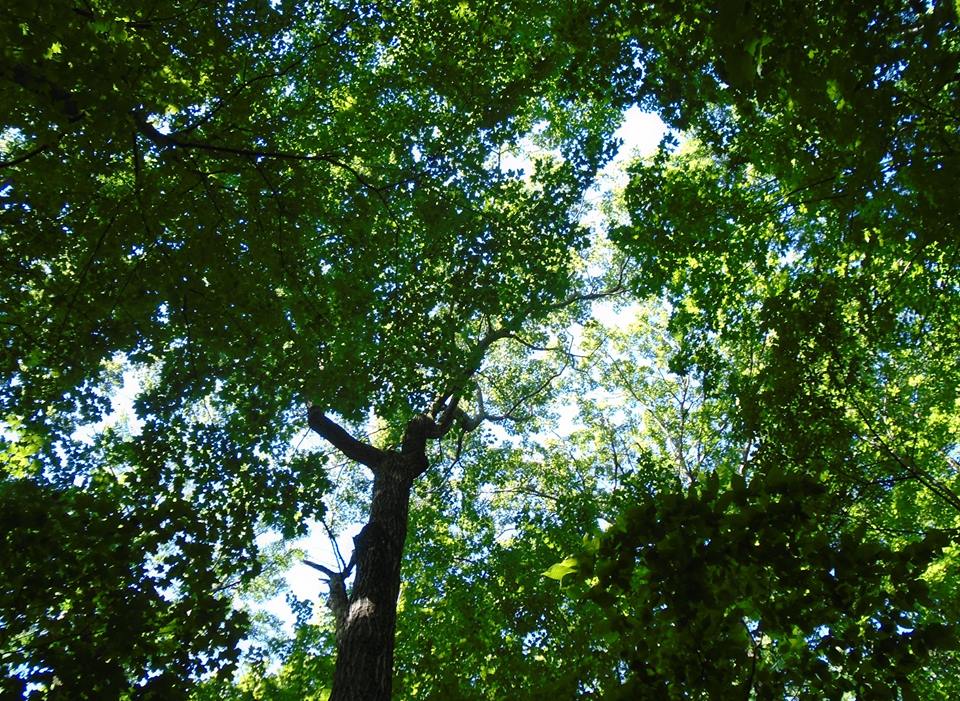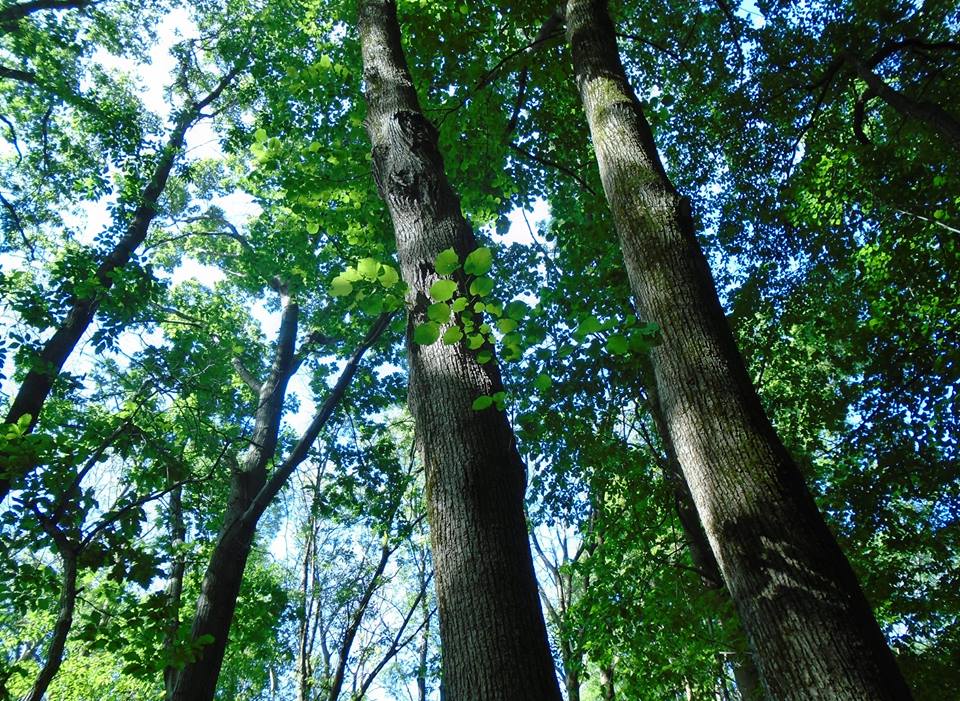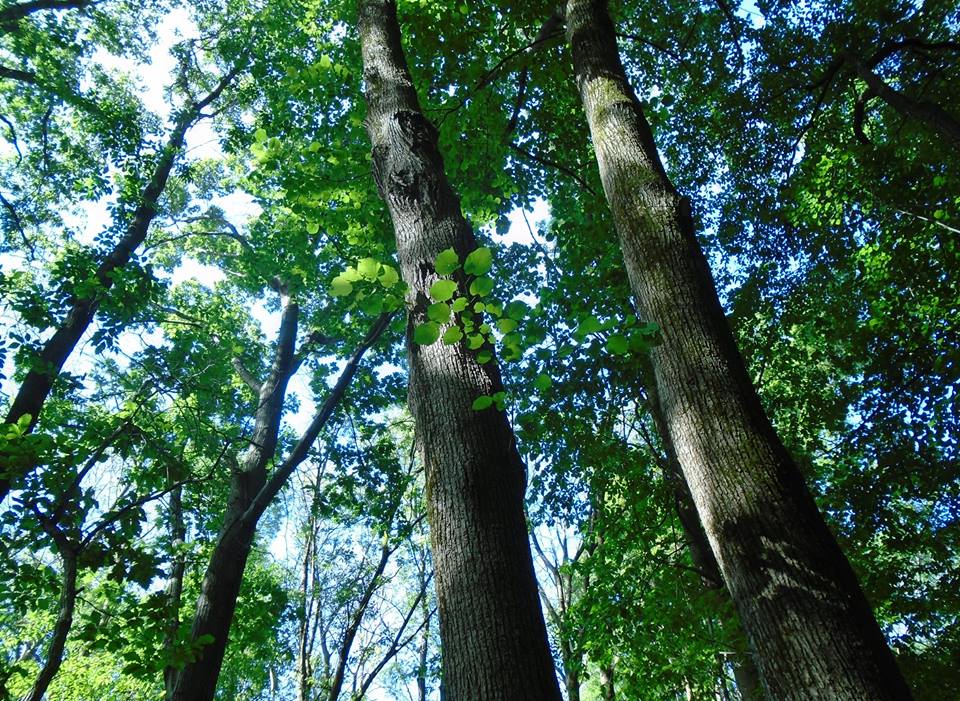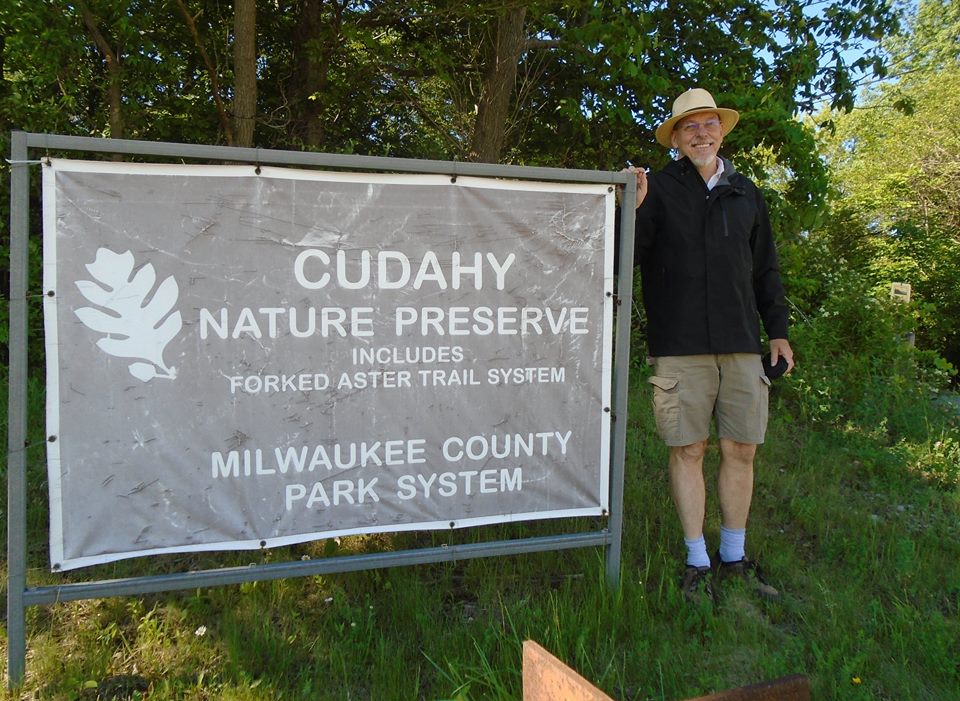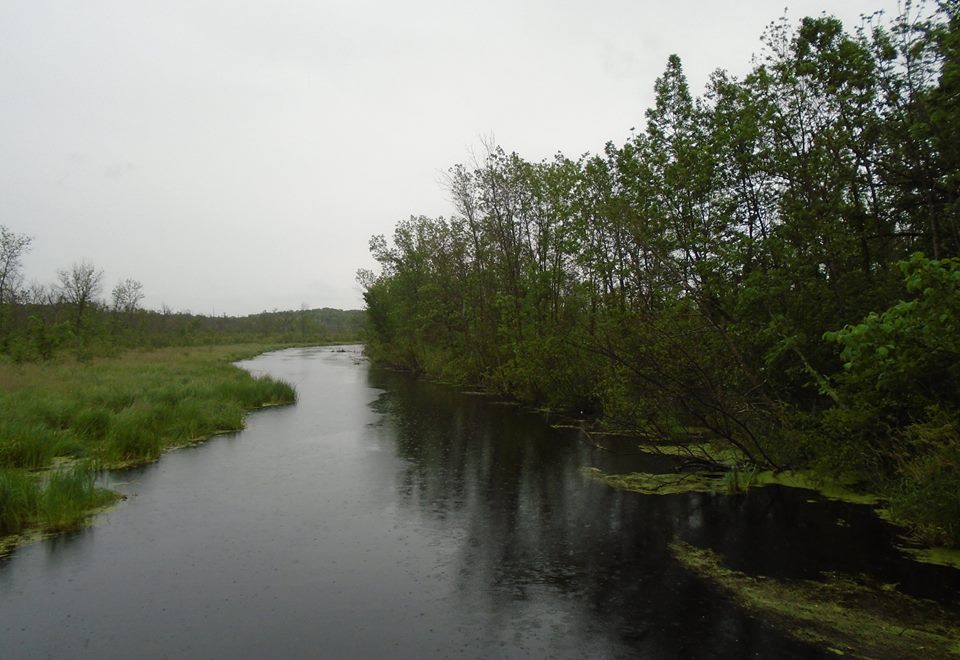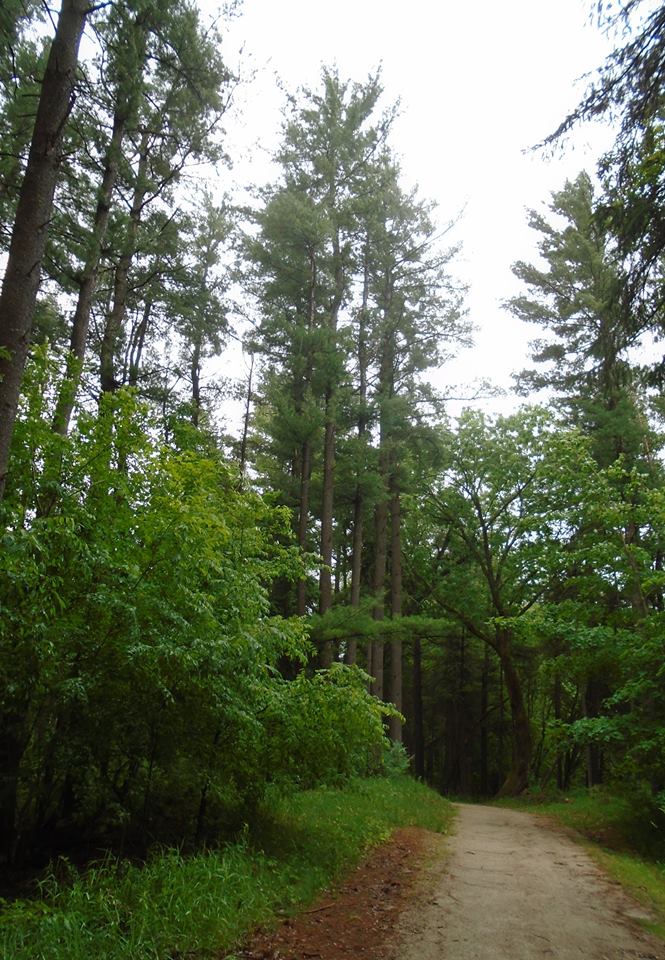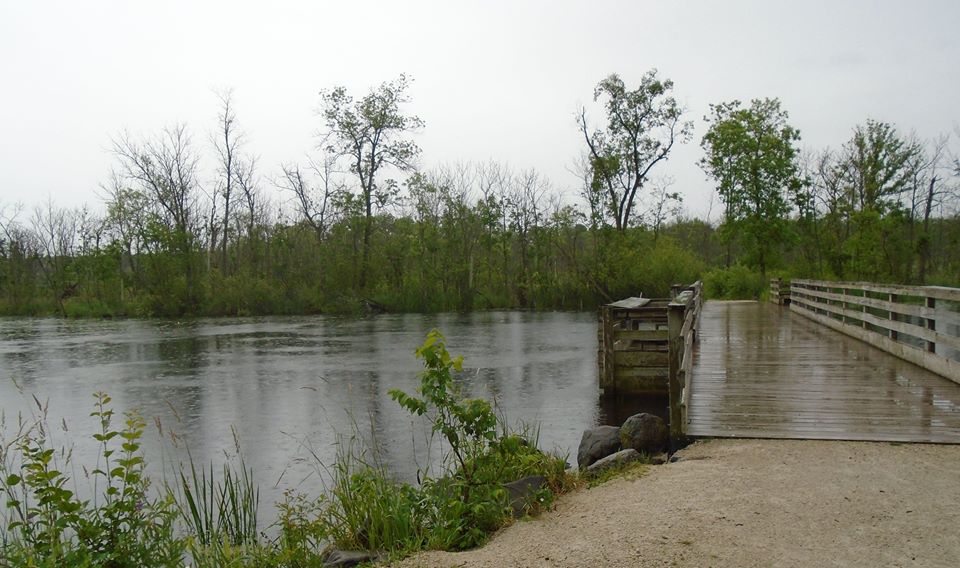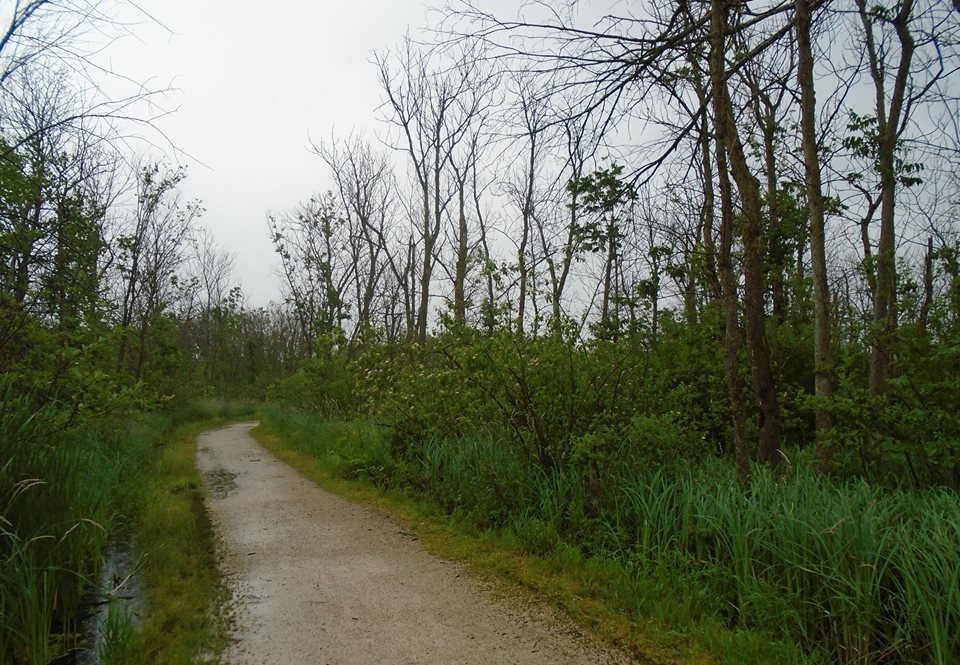Old growth forest in Milwaukee
Cudahy nature center is actually in Oak Creek, just off College Avenue. I started coming here sometime in the early 1970s, before it was a nature center and before Milwaukee County owned it. I used to read books about ecology and natural succession and then come to place like this and try to see how it worked. This is very much my “home woods.”
The preserve is about 42 acres of maple-basswood forest (farther east it would be joined by beech, but there are no natural occurring beech trees in Milwaukee County outside the immediate reach of Lake Michigan fog) that managed to avoid being cut. I doubt it is “virgin” forest, as some say, but it sure is old growth.
An obvious sign of old growth are big trees, but there is more. If the stand is really old growth, i.e. has been there for more than a generation or two, you will find unevenly aged trees and a variety of species.
If you look closely, you can see how the forest composition has been changing. There are some very old oak trees. They are probably at least 200 years old. Some look like they grew in a more open setting, since they had lower branches, but most are very tall before they branch, indicating that they grew with lots of other trees.
The oaks, however, are not the future. Oaks are disturbance dependent, since they need a fair amount of sun. Their offspring will not grow in the shade of the parents and here you have sugar maples and basswood that replace them.
You can see that in my first photo. I saw the trunk and the bark and though “oak” but then looked up and saw maples leaves. I was confused for a second and then looked farther up and saw oak leaves. If I could jump 100 feet into the air, I would see an oak poking out above a sea of maples. The next photo shows some very big basswood trees. They are part of what we used to call the climate community. Basswood and maples will dominate this site until disturbed, since their seedlings can thrive in the shade. The third photo is one of the old oaks that I bet grew up in a much less dense forest, maybe a field. Last is me by the sign for the nature preserve.
Kettle Moraines
Continuing some observations from yesterday’s wet walk around Mauthe Lake. One thing I like about the walk is the constancy of the biotic communities around the lake; another is the constant change. It seems like a contradiction that both can be true at the same time, but that is how natural systems work.
One change I do not like is the death of the ash trees. I noted last time that the ash were still alive. Invasive emerald ash borers evidently arrived in sufficient numbers to change that. I wonder how the damp, but not wet, land near the lake will change.The ash grew well in this environment and changed it by their growing, pulling up water and transpiring it. Will the damp-land become wetland now that they are not doing that? Will the damp forest become more marsh-like. Or will some other sort of trees take up the slack from that niche? There may adapt some natural control. Emerald ash borers eat only ash. They have now eaten themselves out of a home, although I am sure there are residual populations lurking around. Maybe local birds and frogs will learn to like the taste of ash borers and they will be transformed from an existential threat to a mere local menace, maybe just a nuisance, or maybe human effort can extirpate them. Hope.
Mauthe Lake represents the headwaters of the Milwaukee River. The official source is nearby Long Lake, but it flows through Mauthe. The river was high, as you can see from my photos.
My first picture shows a nice stand of white pine along the path. They are probably (only a guess, I was unable to confirm & if anyone knows better let me know too) seventy years old, planted by CCC. Next is the Milwaukee River leaving Mauthe Lake, followed by a photo of is coming in. The “river” after that is not a river at all. the left branch is the hiking trail and the right one is a bike trail. The water was shallow and warm. Last is the ghost forest of ash trees.

